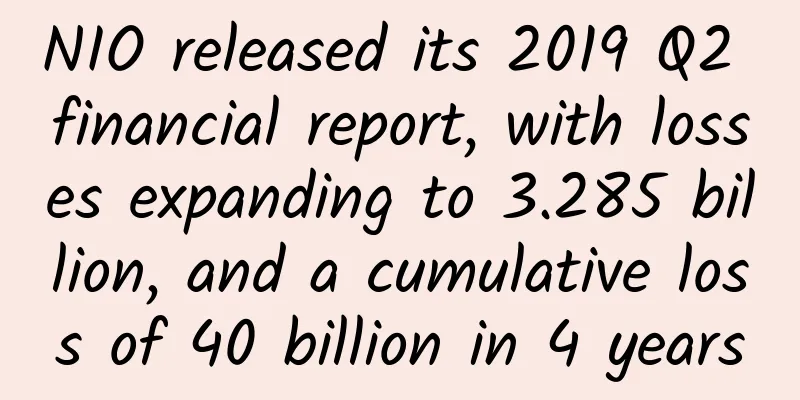The details of the sun's surface are being revealed bit by bit: Observing the sun in the finest detail

|
[Mobile software: Bo Ke Yuan] Do you remember the first batch of images released by the National Science Foundation's 4-meter Inouye Solar Telescope in late January 2020? Revealing the sun in jaw-dropping detail, the telescope is the world's largest solar telescope, allowing researchers to zoom in on the sun's surface at a higher resolution than ever before. But in addition to being able to capture the sun at unprecedented resolution, the size of the new telescope has another advantage: it will also allow scientists to capture unprecedented light. "There are two ways to use a big telescope like the Inouye Solar Telescope: You can look at the Sun with the finest detail that the diameter of the telescope allows, or you can sacrifice some detail and use the telescope like a photon bucket, and the Inouye Solar Telescope gives us a very large bucket," said Roberto Casini, a scientist at the National Center for Atmospheric Research (NCAR). Scientists at NCAR's High Altitude Observatory (HAO) hope that using the telescope as a photon bucket will give the opportunity to discover new polarization signals in the visible spectrum of solar radiation that may have been too faint to be found with previous smaller telescopes. Such signals give scientists key clues about the workings of the Sun's intricate magnetic field, and they are easier to discern when more sunlight is captured. To look for these signals, researchers designed and built one of the five instruments on the Inouye Solar Telescope: the Visible Spectropolarimeter (VISP). This extremely versatile instrument can observe any wavelength within the visible spectrum of solar radiation, giving scientists great flexibility to explore. It will also be combined with a facility software package that will quickly turn the data collected by VISP into scientific products. From a Few to a Many The engineering flexibility and data processing power of the Visible Spectropolarimeter will bring renewed attention to what the sun's polarized light can reveal. NCAR is sponsored by the National Science Foundation (NSF), and the Inouye Solar Telescope is managed by NSF's National Solar Observatory. Scientists have known for more than a century that magnetic fields affect the polarization of light emitted or scattered by ions in the sun's atmosphere. By modeling and interpreting the polarization features of these fields, scientists can track the large-scale shape and structure of the sun's magnetic field. Ultimately, this will help researchers better understand solar eruptions and how to predict them. The space weather generated by these violent events has the potential to disrupt radio communications, power grids and GPS signals, as well as endanger astronauts and damage satellites. But detecting and interpreting polarized light from the sun has been a challenge, in part because the signal is typically so faint that scientists need to collect a large number of photons to distinguish it from the sun's unpolarized background. The instruments used to detect polarization also contribute to this difficulty because they can introduce polarization themselves. For example, the mirrors in a telescope that direct incoming light to a detector also polarize it. The skills required to unravel the polarization signal coming from the Sun and interpret that signal are quite specialized. Until now, solar spectroscopy polarimetry has been a technique that only a few people have mastered. Visp and the Inouye Solar Telescope are designed to break this bottleneck. The instrument can be installed and operated with minimal human intervention. It will feed data directly into the device software, which can process the information and convert it into a product that can be used for science. The possibility of discovering new things The automated design of VISP has another distinct advantage. Unlike its predecessor, which had to be manually reconfigured to study different wavelengths of light, the VISP setup can be easily modified from a computer console to observe any wavelength in the Sun's visible spectrum. With older, labor-intensive spectropolarimeters, scientists tend to stick to well-tested wavelengths that are already known to be sensitive to the Sun's magnetism. Scientists will be able to use VISP to study these same wavelengths and use the resolution of the Inouye Solar Telescope to observe this polarization in unprecedented detail. But VISP will also give scientists a license to explore the full spectrum of visible light, where they might stumble upon new polarization signals never before seen, which could enrich scientists' understanding of the Sun's magnetic field. Finding these previously undiscovered signals may be more likely with VISP because, in addition to the instrument's automated flexibility, it is mounted under a giant telescope that lets in more light. New polarization signals may be fainter than known signals, and their detection will require a larger pool of photons to isolate the signal from the noise. VISP is still in the final process of site acceptance and science verification, during which researchers will demonstrate that the instrument is meeting all functional requirements so it is scientifically viable. Once this process is complete, the instrument will begin science operations. Eventually, all telescope instruments, including VISP, will be available to researchers around the world. Boco Park | Research/From: NCAR & UCAR BoKeYuan|Science, technology, research, popular science Follow [Bokeyuan] to see more beautiful cosmic science |
>>: Are you type A or type B? If you are the former, take care of your heart
Recommend
When spring comes and flowers bloom, be sure to tighten these safety "strings" →
As spring approaches and the temperature graduall...
Milestone! NASA probe touches the sun for the first time
According to the latest news from foreign media, ...
How much does it cost to attract investors for the Licai Makeup Mini Program?
The advantages of WeChat mini program investment ...
Is there really life on Venus?
Last year, scientists from the Royal Astronomical...
The story behind Liu Chuanzhi's "Liu Tao"
On October 8, Mr. Liu from Lenovo Holdings posted...
National Myopia Prevention and Control Education Month | How to prevent and control myopia in children? Beware of four blind spots!
For the sake of children's studies Many paren...
A quick training course on making elegant PPT
Introduction to the resources of the quick traini...
How does operations perform data analysis? 4 steps!
Although the content of different operation direc...
Caries, gingivitis... How to treat these 4 dental problems that make you lose your appetite? You will understand after reading this →
Caries, gingivitis, dental trauma and malocclusio...
Is dopamine, which is so popular, really the "code for happiness"?
© MIT News Leviathan Press: A few years ago, I wa...
The latest ranking of 50 information flow advertising media platforms
The following is the latest traffic rankings of t...
What to do if you encounter user loss during APP operation
No matter how great a product is, there will be p...
The "North and South Audi" plan has failed? Dealer farce shows that SAIC Audi's move may not be worth the loss
The Audi brand hopes to replicate the "North...
National Hepatitis Day丨How does your liver become overdrawn step by step?
The cover image and the images in this article ar...
APP promotion: Where do users come from for new products with no money to promote?
How to cold start a product with no people, no mo...









